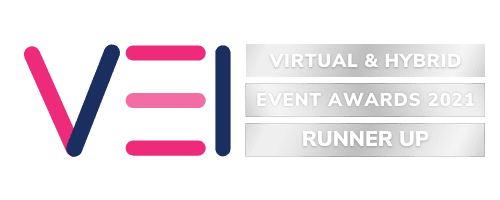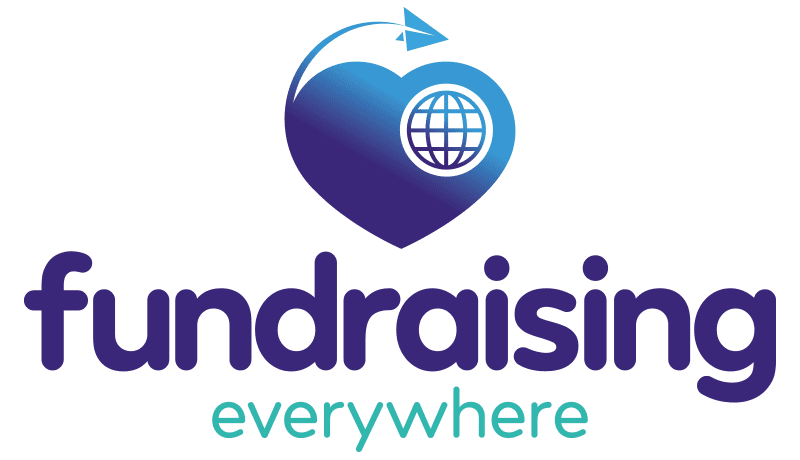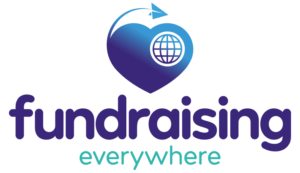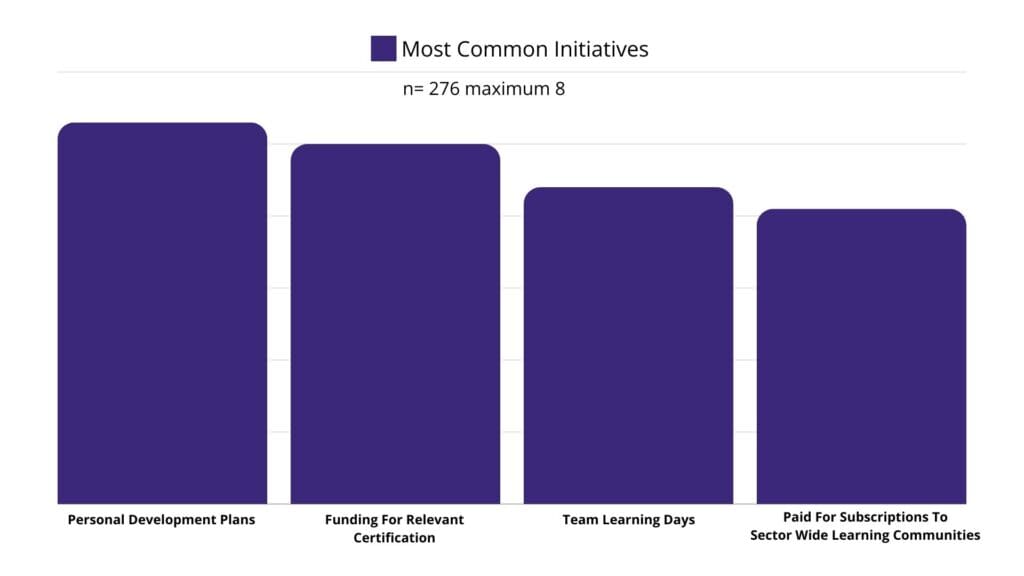
Corporate sponsorship can fundamentally transform a charity’s circumstances, offering essential financial resources to succeed and connecting it to valuable community networks. At the same time, businesses enjoy improved brand identity and enhanced employee engagement. Understanding the basics of how corporate sponsorships work, their benefits, and how to get started are critical to determining a strategy for this type of support for your charity.
In this guide, we’ll delve into the essentials of corporate sponsorships to help equip your charity with the knowledge and know-how to secure this transformative support.
What Are Corporate Sponsorships?
According to Double the Donation, corporate sponsorship is “a form of support charities receive from corporations to fund events, programmes, or specific projects.”
Corporate sponsorships can come in various forms, each offering unique opportunities for collaboration and benefits. Here are some common types of such sponsorships:
- Financial grants. Cash sponsorships can directly fund your mission or help support events. For example, a business might purchase a sponsorship for a charity golf tournament, underwriting event costs and boosting fundraising outcomes.
- In-kind donations. These are non-monetary gifts or contributions that assist your charity’s operations or support a specific initiative or event. Examples could include donated spaces for a fundraising gala, new computers or other facility resources, or prizes or catering for a charity golf tournament.
- Employee volunteering programmes. Many companies encourage employees to volunteer for charities by organising outings or providing paid volunteer time off. These programmes support your cause and engage the company’s workforce.
- Cross-marketing. This involves businesses promoting your mission through their marketing channels. For instance, a corporate partner could highlight your charity’s work or fundraising events on their social media platforms or website, reaching a broader audience.
- Employee giving. Many companies encourage employee donations to charity by offering incentives such as matching gifts or volunteer grants, which can significantly amplify individual contributions.
Why Are Corporate Sponsorships Beneficial?
The benefits are numerous, both for the charity that receives the sponsorship support and for the corporate partner themselves. Here’s why they work well for both parties:
Benefits for Charities
- Enhanced mission support. Sponsorships provide financial resources as well as expertise that can help directly advance your cause and mission fulfilment.
- Additional revenue. Sponsorships can help cover overhead costs or provide unrestricted funds, freeing up other sources of funds for mission activities.
- Expanded networks. Corporate sponsorships give your charity access to the sponsor’s networks, which opens doors to new potential supporters and donors.
Benefits for Corporations
- Increased employee engagement. Supporting a charity can provide employees with new gifting and volunteer opportunities that increase employee engagement and boost morale.
- Improved brand awareness and lift. Partnering with a charity enhances public perception of a business and builds positive connections with the community.
- Access to new audiences. When a business collaborates with a charity, it introduces the brand to potential new clients and customers that align with their values.
How Can Charities Get Started With Corporate Sponsorships?
It’s a good idea to start by building a relationship with the sponsor prior to making a formal pitch. You might arrange an informal meeting, such as a coffee chat, to build rapport and help you better understand the sponsor’s interests and motivations (both personally and professionally). A strong relationship significantly increases the likelihood of securing a sponsorship.
Next, create a custom proposal for the sponsor (and tailor it to other sponsorship requests to different businesses). Using insights from your get-to-know-each-other meeting and additional prospect research, you can craft a pitch that hits upon the company’s strengths and interests. It’s a good practice to ask for more support than you need, which leaves room for negotiation, if needed.
Your proposal should highlight the benefits of partnering with your charity. For instance, when proposing that a business sponsor a hole-in-one contest at a charity golf tournament, try to include details such as attendance figures from the last event and anticipated turnout for this year. This positions the sponsorship as a high-value opportunity to boost brand visibility and awareness.
It’s also good to come to the pitch prepared to compromise. Because every business has different strengths and capacity to enact change, you may need to educate potential partners about innovative opportunities to implement corporate social responsibility (CSR) by working with your charity. Continuing with the golf tournament example, a local sporting goods store may not have a large budget to make cash contributions, but may be willing to donate premium golf equipment, clothing, or accessories that can be used as a raffle item. Compromising lays the foundation for future support and builds a strong partnership.
Next Steps
Corporate sponsorships are mutually beneficial partnerships that can revolutionise your charity’s ability to achieve its goals. By understanding the different types of sponsorships and tailoring your approach to potential partners, you can create compelling proposals that inspire companies and corporations to join your mission.
To find potential sponsors, consider networking at local business forums, attending industry events, or leveraging online tools and directories. By taking these proactive steps, your charity will be well on its way to building meaningful and impactful corporate partnerships.
Want to learn more about corporate fundraising?
Join us at Corporate Partnerships Everywhere Conference 2025.
Voice Your Thoughts 🗣️
Our platform is open to anyone and everyone in the sector that has an opinion, idea, or resource they would like to share to help make our sector better. If you would like write and share something, pop an email over to hello@fundraisingeverywhere.com and we will support you every step of the way to share your voice.
In this episode of the fundraising everywhere podcast, Joe Waters will be discussing how to utilise AI to build better Corporate Partnerships. Creating successful corporate partnerships requires a mix of innovation, strategic insight, and a win-win mindset.
In this context, the domain of AI-enhanced partnerships, powered by ChatGPT, is emerging as a powerful asset for pinpointing, nurturing, and solidifying corporate relationships. From the initial handshake to the final signature, this podcast episode will show you how to use AI to elevate your partnership strategy. Among other things, you’ll streamline.
Join us at the Fundraising Everywhere Corporate Partnerships Conference on Thursday 20th March for even more expert insights and actionable advice. You can register here. Use discount code FEPODCAST25 for a 25% discount.
If you enjoyed this episode, don’t forget to hit follow and enable notifications so you’ll get notified to be first to hear of future podcast episodes. We’d love to see you back again!
And thank you to our friends at JustGiving who make the Fundraising Everywhere Podcast possible.
Transcript
[00:00:00] Multiple Voices: Fundraising everywhere. Fundraising everywhere. Fundraising everywhere. Fundraising everywhere. Fundraising everywhere. Fundraising everywhere. Fundraising everywhere. Fundraising everywhere. Fundraising everywhere. Fundraising everywhere. Fundraising everywhere. Fundraising everywhere. Fundraising everywhere. Fundraising everywhere. Fundraising everywhere. Fundraising everywhere. Fundraising everywhere. Fundraising everywhere. , you don’t need to add me in there.
[00:00:31] Jade Cunnah: Welcome to the Fundraising Everywhere podcast. In this episode, we’ll be taking a look at one of our favourite corporate partnership sessions in celebration of our Corporate Partnerships Conference coming up on Thursday the 20th of March. If you’d like to join us on the day, you can use promo code FEPodcast25 to get 25 percent off.
[00:00:52] Jade Cunnah: Just head on over to fundraisingeverywhere. com and pop in FEPodcast25 at checkout to get 25 percent off our corporate partnerships conference in March. Now, onto today’s episode.
[00:01:05] Joe Waters: Hello everyone, it’s Joe Waters, and I want to welcome you to How to Use AI to Build Better Corporate Partnerships. And I want to start off today’s presentation by telling you a little bit about me, if you haven’t met me before. I’ve actually been involved in several corporate partnership conferences. And have really enjoyed it.
[00:01:28] Joe Waters: And I’m really happy to be speaking to you here today. Um, I’m the founder of Selfish Giving, which focuses on win win non-profit and corporate partnerships. I also publish, uh, what some consider to be a popular bi monthly newsletter on corporate partnerships. You can check that out at selfishgiving. com. I actually archive all my newsletters on my website.
[00:01:48] Joe Waters: So you can check out back issues before you sign up. I’m a cause marketing and sponsorship expert. So I don’t do everything in corporate partnerships. I specifically focus on cause marketing and sponsorships, and I’ve written two books on the subject. I’ve written cause marketing for dummies and I’ve written fundraising for businesses.
[00:02:07] Joe Waters: I’m an American who’s based in Boston. You can probably hear my, uh, my wicked accent. You guys have your own wicked accent. So I think we’ll work good together. And one of the final things that I want to emphasize is that I am not. An AI expert. I am AI curious, which I suspect you are too. So my goal here today is to really share with you some practical insights about how to use AI in the corporate partnership space.
[00:02:34] Joe Waters: And I really think it’s an exciting opportunity, folks, that you’re gonna enjoy. So what I’m going to be talking about today is I’m going to be talking about the intersection of AI and corporate partnerships and where I think the opportunity is. I’m going to be talking about AI and what I call the partnership solicitation process map.
[00:02:51] Joe Waters: So the process map is all the steps that you have to go through in order to secure A partnership and I’m gonna show you how to use AI in each one of those steps. Now, today I’m gonna have four suggestions for you on how to use AI and two reminders. I think that will be really useful for you. I’m also gonna show you how to use AI to do better searches of your favorite corporate partnership websites, and not just mine, but other people’s sites too.
[00:03:19] Joe Waters: I’m also going to give you four additional A. I. Resources. Um, I have something called prompt pot luck, which I’m going to tell you about when I get there. And then finally, I’m going to talk about proceeding with caution on a I and some of the dangers and some of the hazards that we need to be aware of when using a I around partnerships.
[00:03:38] Joe Waters: Now, just a couple thoughts here on a I. You know, I really respect Mark Schaefer, who is a marketer here in the States, and you know, he’s showing us where we are right now. With AI, we are just getting started folks. I mean, AI has been around since the forties and fifties folks, but, um, it is really accelerating in it next few years.
[00:03:58] Joe Waters: We’re going to see it, you know, affecting our lives in so many different ways, and we’re going to be seeing engaged in so many different things that we use, we won’t even notice it to folks. And, you know, for those people who are thinking too, I often think of AI is. AI learns like humans learn and does stuff that humans do in ways that humans do them, but AI can do them better and faster.
[00:04:20] Joe Waters: That’s the opportunity, really with ai. Now, for our conversation today, I am gonna be focusing on one specific AI tool chat, GPT for, okay. This is the paid version of chat, GPT. Okay? It’s $20 a month. You don’t have to sign up for a whole year. You can sign up for a month and then discontinue it. Or you could use the free version of chat GPT, which is called 3.
[00:04:45] Joe Waters: 5. All right. Um, I think you’ll get many of the results that I’m sharing here today, but I have found that chat GPT 4 is much better and it’s worth the investment. So, Fortunately, because of ChatGPT4, you now have access to a wicked smart partnership intern who works 24 7, doesn’t need coffee breaks, but will sometimes make mistakes, just like the real ones do, right?
[00:05:10] Joe Waters: And some of you have asked, how smart is Chat GPT or AI in general. Well, it would do better on a standardized test than about 80 percent of us. And if you saw my scores from standardized tests, you would know what I mean. Okay, in terms of them being a lot smarter than us in better in some processes. So this is the chat GPT interface, right?
[00:05:32] Joe Waters: In terms of how you would look at it. If you use the chat GPT 3. 5, which is the free version, it’s going to look very similar to this. One of the things that I’ll recommend throughout my presentation is to ask ChatGPT how it can help you. This is critical to understanding and using AI effectively. So I would ask ChatGPT in the field of corporate partnerships, and I provide a definition there, you know, identify the things ChatGPT would be useful for, and bullet this list.
[00:06:03] Joe Waters: Follow this list with the things it would be less useful for. So when we look at the things that’s most useful for, for partnerships, according to chat GPT, what are they? Content creation, right? Which is top of the list here, market research and insights, right? Providing us insights and trends and potential partnership opportunities.
[00:06:23] Joe Waters: Ideas generation for a project. So for campaigns, right? There were 40 different forms of cars marketing. We could use which one would be best for a particular client. Um, F. A. Q. S. And customer support huge opportunity there, right to answer people’s questions. And one of the things I think is really going to be big folks training and onboarding for people as you bring people new people onto your partnership team using a I to Yeah.
[00:06:49] Joe Waters: quickly get them up to speed around partnerships. I think it’s going to be invaluable. And then of course, data analysis, right? It can crunch numbers and data much more quickly and effectively than humans can. And this is just some of the opportunities with chat GPT. Now, what isn’t chat GPT good at, right?
[00:07:08] Joe Waters: Well, human relationships, right? It’s not human. So it’s not, you know, we’re going to need a person, at least for the time being, to manage relationships. It’s also not good, like, complex negotiations or decision making. That’s something to keep in mind, and I have an illustration at the end of my presentation to show you what I mean.
[00:07:27] Joe Waters: Understanding non verbal communications, all right? Can’t see you, right? So, or it’s not picking up. yet in terms of what you’re saying by your nonverbal cues. Ethical judgment, big problem with chat GPT and crisis management. All right, so you can see that chat GPT is going to be useful for a lot of things in the partnership world, but in some ways it’s going to be very challenging.
[00:07:52] Joe Waters: So the next thing I want to do here is I want to match up chat GPT with the partnership solicitation process map. And as I told you before, the. The partnership solicitation process map is basically, and this is not exhaustive, but it’s basically all the steps that you need to go through in order to build an effective partnership.
[00:08:12] Joe Waters: This begins with identifying potential partners and then ends with signing a contract, executing the partnership, and then writing a case study and asking for referrals, right? So it’s a loop, right? You know, we go through all these steps and then we start anew with a new prospect and potential partner.
[00:08:30] Joe Waters: Now, One of the first things I want to focus on with ChatGPT is how it can help us research and evaluate prospects, okay? And there’s just a huge opportunity. Now, one of the things I want to point out, ask ChatGPT how to use it for prospecting, and what does it come back and say? You can do customized outreach, right?
[00:08:52] Joe Waters: Personalizing emails to potential prospects. Speech analysis. And one of the things that you’ll, uh, you’ll learn throughout my presentation is that it’s going to be really important moving forward to record your sales calls with people on Zoom so that you can review and use that content with ChatGPT.
[00:09:10] Joe Waters: Uh, content creation, competitive analysis, frequently asked questions generation. So you can ask chat GPT for advice about how you should use it for prospecting. So one of the things that I did was I plugged in one of my favorite places to visit when I’m in London, the Dickens Museum. And I put in that I wanted to recruit more corporate partners for the Dickens Museum, and I asked it, you know, what kind of companies would be good prospects for sponsorship of the museum.
[00:09:41] Joe Waters: And of course it came back and it said ideal corporate partners might include companies in the publishing and literary sector. educational institution, cultural and historical organizations and businesses with a focus on British heritage in tourism. Now, this is good information, especially maybe for a newbie in the partnership world, but not incredibly revealing.
[00:10:01] Joe Waters: So I asked another question, a follow up question of chat GPT. What is some of the unique businesses? I would want to consider. And it came back and it said some of the craft and lifestyle brands that draw inspiration from the Victorian aesthetic or literally themes, uh, could also align well with the museum’s mission and visitor interest.
[00:10:22] Joe Waters: So I said, Oh, this is kind of interesting. Can you give me a list of these businesses? Okay, and this is where we run into one of the shortcomings of chat GPT is because chat GPT isn’t real time. It’s actually information that was imported up to April 2023. It comes back and it says, you know what? I don’t have that information because I’m not connected to the internet.
[00:10:45] Joe Waters: All right. I’m going to show you shortly though, how you can bypass this and use another AI platform to find out things in real time. Right? So you can use chat GPT for potty of prospecting, and then you can jump over to this other service that I’m going to recommend in a few minutes that will give you additional information in.
[00:11:06] Joe Waters: Real time. Now, one of the things I know from being in London and shopping with my wife is that Penhaligon is a great place to shop there. And I said, does the brand Penhaligon have a Victorian flair to it? Is that something that I would consider as a prospect? And they said, yes. Penhaligon is a British perfume place, you know, that has a Victorian flair.
[00:11:26] Joe Waters: So you can do your research on chat GPT and, you know, uh, investigate companies, learn about different sectors, different industries, and how you can connect with them. And in a minute, I’m going to show you how to get a specific prospect list so that you have something to work with. Now, the good thing about ChatGPT and the Partnership Solicitation Process Map is you can use this throughout the process, all right?
[00:11:50] Joe Waters: So, when it comes to emailing people, right, you can input details about the partnership opportunity, and you can input details about what you think at the beginning might be the reasons for a person to a company to align with you, and then ChatGPT will tell you the prospects, goals, or challenges and come up with you.
[00:12:10] Joe Waters: for you with some compelling reasons, which I think would be useful. So that can be very useful for chat GPT. Another opportunity is post call. And again, we’re recording our messages, right? We’re recording our interactions with people based on the transcript of the following call, identify action items and steps I need to take to keep the momentum going.
[00:12:29] Joe Waters: So think about this. You don’t have to keep track of, you know, what the takeaways from the meeting are. You can ask chat GPT what the takeaway. Of those meetings were right. So it’s like having a personal assistant with you. Another thing that I think is really useful about chat GPT and I’m going to dig into this a little bit to show you more about it is you can upload case studies to chat GPT along with information about your prospect and then ask which case study.
[00:12:56] Joe Waters: Or studies would be most applicable to the prospect and what you should emphasize. And this is very applicable to our conversation because many of you might remember last year at the corporate partnership conference, I talked about case studies and how to write effective case studies. So using the chat GPT to do this can be very effective because it could pick up things in your case study that would be relevant to the prospect that you didn’t initially recognize.
[00:13:22] Joe Waters: Okay. But the thing is. Is again, you can go back to chat gpt and ask it How can you help me write case studies for my partnership and look at all the stuff that it can do for you Okay, it can put it can run the whole process process for you in terms of outlining the structure of it case study. Maybe you’ve never written one before.
[00:13:42] Joe Waters: Maybe you didn’t attend my presentation last year. So you don’t know exactly how you should structure a case study. It can help you with that. It can gather information. It can draft sections with you so you can do everything. It can generate charts and everything that you might need for a case study. So that’s one of the things you want to keep on doing is asking chat GPT, how it can help you.
[00:14:03] Joe Waters: Now how I use chat GPT to write case studies for my clients. Well, I interview them on zoom. And I record it, and then I upload it to Autodat AI, which is a transcription service. And then I take that transcription and I put it right into ChatGPT. And ChatGPT, uh, based on the parameters I set for it.
[00:14:26] Joe Waters: generates a draft of that case study for me. And then throughout the entire process of that case study, I finalized that case study using chat GPT. So we work hand in hand. This isn’t about chat GPT doing all the work. This is about me working with it to write a case study. And here are four different ways that chat GPT helps me write case studies just on the first page of the case study I’ve written.
[00:14:53] Joe Waters: The first thing it does is it helped me write titles. Right. So what I do post case study is I cut and paste the case study into chat GPT and asked me to write four case study titles and I asked for one of them to be very clever, which I think the one on the bottom number four is the second thing that I asked chat GPT to do is in one sentence describe Reynolds Americans business, the businesses I was profiling on this.
[00:15:17] Joe Waters: The third thing I asked it to do was based on the transcript that I put in bullet Reynolds goals for partnering with the organization. Now think about that. That’s a question I asked during my conversation with him. But it’s interesting because sometimes chat GPT picks up reasons that I didn’t recognize.
[00:15:37] Joe Waters: And then I add it to this section. Okay. So it’s like having another person there that can give you lots of great information. And then finally, based on this transcript. Write up a short backstory of the partnership between Keep America Beautiful and Reynolds American. Attribute all quotes to this person.
[00:15:55] Joe Waters: And it takes that information and it writes up the backstory. So this is just four ways that I’ve used ChatGPT on the first page. of my case studies. Now, what I think is interesting about this, though, is when you go to ChatGPT, you have a bunch of add ons that you can check out through this section here.
[00:16:14] Joe Waters: It’s called ExploreGPTs, okay? And two of them that I’ve been using for case studies that you may want to try is I’ve been using Whimsical and I’ve been using SlideCreator. Okay. The first one slide creator is very useful because I can take the case study, put it into slide creator, and it generates a slide for me that I can use and share with my clients so they can use it in their presentation.
[00:16:38] Joe Waters: So sometimes they say to me, Joe, it’s great to have a five page case study. I wish I just had this all on a slide. Well, I can do that in about 30 seconds. Okay. Using chat PT. Did I say 30, maybe 10 seconds with chat GPT. All I need to do is put in, cut and paste the case study, and ask it to generate a slide, and this is what I get.
[00:16:56] Joe Waters: Another thing that you can do with ChatGPT is add Whimsical to it and Whimsical creates flowcharts from it. And I have found this to be very helpful with clients because it shows in a flowchart, step by step, how the partnership works. Now think about the value of this. You’re sitting down talking to a potential partner and you can show them step by step, not only from the case study, but from a flowchart, how a case study works or how a partnership works.
[00:17:24] Joe Waters: Think about this too in the value for onboarding people to your organization, showing them step by step how a partnership works. It can be very valuable. So I would take advantage of those things. Another thing that you can do with chat GPT is following up with people. So based on the transcript of our sales call.
[00:17:43] Joe Waters: Identify the prospect’s key areas of concern, how to address them, and what additional objections I might need to address in our next call. So it’s taking this transcript of what you just said and saying, hey, based on that conversation, what do you think some of the things are going to bring up next time?
[00:17:59] Joe Waters: Very valuable, I think, to your conversations. And then finally with contracts. So one of the things that I love about ChatGPT is if you record a conversation with a potential partner and they, and you say, okay, this is how the partnership is going to work. Do you agree with that? Okay. You want this in the partnership?
[00:18:16] Joe Waters: You can take that transcript, put it into ChatGPT and say, Hey, generate a letter of agreement or generate a contract based on what we talked about in this conversation. And I did that exactly. With uh, here in Massachusetts and in the United States in general, every state has its own what we call commercial co venture guidelines.
[00:18:37] Joe Waters: Okay. So what I asked CHAT GPT to do was to create a contract to me based on the guidelines of the state of Massachusetts. And then it gave me all that information in contract. Now, keep in mind, You want to share this with a lawyer, right? You just don’t want to take this and have them sign it. But the good thing is, is you have all the ingredients right here of a contract.
[00:18:59] Joe Waters: And letter agreements are even easier, right? Based on your conversation. But you definitely want to pass this by a lawyer before you actually use something like this. But I think it’s very helpful to have the terms and everything spelled out to make sure that you’re following the guidelines in this country based on the state that you’re in.
[00:19:17] Joe Waters: Okay, so four suggestions and two reminders when using chat GPT. First thing is, always have it open, okay? Jump on it whenever you have a question. And you know what? Don’t just use it for partnerships. Use it for everything. I use it for things I’m doing in the garden. I use it for planning my trip later this year abroad.
[00:19:37] Joe Waters: Maybe I’ll go see Simon in Ireland. Um, and you know, one of the things, uh, we just got a new dog a couple of weeks ago, right? You know, how can I use this with the new dog? You know, how do I train my dog? How do I get them on the leash? How do I get them to stop barking? Whatever. You know, there’s some really helpful things that I found by using, uh, chat GPT for personal things.
[00:19:57] Joe Waters: It accelerated my learning on using it for partnerships. So always have it open. Okay. Another thing is, is tell it who it is, right? You are a partnership expert for a nonprofit. You are a expert dog trainer who specializes in training terriers. Uh, this is what I want you to do. Tell it who you are. Okay.
[00:20:18] Joe Waters: Share your advice so it can be understood by someone who is completely new in the partnership field. All right. So give it as much information as you can and be specific about what you’re looking for. And one of the great things about, uh, chat GPT is it doesn’t mind lots of information. Your intern probably doesn’t appreciate it, but chat GPT loves it.
[00:20:39] Joe Waters: So long prompts are good. And what I really encourage you to do is have a conversation with it, right? When you don’t get the results you want. Put in more information. Ask it to define things for you. Ask it to explain things for you. Now, Jeannie Jennings did a great job, I think, with this slide in terms of talking about don’t do this, do this instead.
[00:21:00] Joe Waters: And what she has here is come up with 10 ideas for a blog post about using generative AI in email marketing. That sounds pretty good. But what she really suggests is do this instead. And notice it’s a lot of the things that I just told you, right? Give it a role. You are a world class content strategist.
[00:21:16] Joe Waters: Your task is this. You need to think about this from various angles. Ensure that blah. And then provide the output, right? So this is a very specific prompt. And prompt is just input, folks. Think of it like going to Google and you type in something in a Google bar. That’s all you’re doing there too. That’s a prompt in AI.
[00:21:36] Joe Waters: So be as specific as you can. And I have another resource on this I think will be helpful. So one of the things that I wanted to teach you too is how to search your favorite corporate partnership websites. Now there are several of them out there, and I hope you visit mine, selfishgiving. com. But I’m also sure that you checked out Engage for Good in the U.
[00:21:54] Joe Waters: S., Remarkable Partnerships, my man Jonathan Andrew, uh, in the U. K., and of course Sharon and Linda, uh, down in Australia at Stellar Partnerships. Now One of the things that you can do is you can ask CHAP GPT to analyze a specific site, okay, to only look at that site. So Engage For Good, look at Engage For Good and tell me about the legal side of corporate partnerships.
[00:22:18] Joe Waters: And instead of giving you results, like Google does that you need to go through. It just gives you answers. That’s what I love about AI, right? It gives you answers about what you’re looking for, like here, asking my site, selfishgiving. com about checkout charity programs. It gives you specific answers that you can use in the moment.
[00:22:38] Joe Waters: So I find this. to be a much better way of searching sites. And also with Jonathan Andrews and Remarkable Partnerships, look at here in terms of like asking him specific information. Now, it’s interesting with Jonathan’s site, though, is I had to go in and explore a little bit about how he talked about corporate partnerships because Jonathan calls them corporate charity partnerships, which is fine.
[00:23:01] Joe Waters: But you need to use similar language like that in terms of getting the results. Now, what’s good about this is I got results, but then on the bottom, I can ask another question, right? What does it mean to identify a five star prospect? And then chat GPT will come back and explain that to you. So just a much better way of searching sites for corporate partnership information, keep in mind that engage for good.
[00:23:25] Joe Waters: Has been around since 2002. I’ve been running selfish giving.com since 2004. Uh, I don’t know how long Jonathan’s been writing remarkable partnerships and how long stellar partnerships have been around, but there’s lots of information on both those sites. Use Chat GPT to find it. Okay, so I’m going to give you four additional AI resources that you can use, and one of them is going to answer the question that we had earlier about finding real time information.
[00:23:50] Joe Waters: Use Perplexity. ai. Again, this is a Google substitute, right? Instead of using Google, you can use Perplexity. ai. And one of the things you’ll notice, remember earlier I was talking about finding companies and getting a list of companies with Victorian flair in London? Well, when I asked that question at ChatGPT, they didn’t have an answer, right?
[00:24:12] Joe Waters: But when I went on Perplexity, which operates in real time information, they were able to give me that answer. So what I find myself doing, folks, is jumping back and forth from ChatGPT to Perplexity. Now, the difference is, is that ChatGPT is much more sophisticated and conversational, whereas Perplexity, I think, is much more like a search engine replacement in terms of giving you the answers that you’re looking for.
[00:24:36] Joe Waters: So I tend to bop back, you know, from, from each one. I spend a little time on ChatGPT, but then when I’m looking for real, uh, live information, like real time information, I go over to Perplexity. And I did this the other day. I was writing a case study on Gate Petroleum, which is a company here in the States, and ChatGPT, I asked them how many locations they had, how many stores they had.
[00:24:59] Joe Waters: Chat GPT couldn’t answer that question because if the information goes back almost a whole year. All right. Uh, fortunately, a I perplexity A. I had that information, right? Told me it’s got 70 73 stores, right? So the idea here is that when you’re looking for real time information, perplexity dot A. I is probably a better choice.
[00:25:20] Joe Waters: Now you may be wondering where I learn about a lot of the things I’ve been talking about today. Well, I really suggest that you sign up for the superhuman. ai newsletter. And it has some great information about how to use chat GPT and the other, um, AI tools out there, you know, from everything from how to use it for research to how to improve your resume with chat GPT.
[00:25:44] Joe Waters: So essentially in every issue, you get like a free prompt, right. That will teach you how to use chat GPT. And I’ve just learned so much about it. And I think you will too. Um, another thing, too, is it talks about, you know, things that are happening in the AI world, like the launch of Gemini, which is Google’s version of Chat GPT that you can check out and learn from.
[00:26:02] Joe Waters: And then one of the things I love, too, it’s always got five AI tools to supercharge your productivity, and it’s just like, You would not believe all the different AI tools out there that you can use to do things. So it’s just incredible, uh, you know, all these things that are coming up. And I’m only talking about really one today, folks, chat GPT, but there are all sorts of other things.
[00:26:21] Joe Waters: So you’ll learn a lot from signing up for superhuman. ai. Another great resource for you that you should check out is Wired Impact. Wired Impact, uh, I think it was just last week, did a webinar on how to use AI to write non profit website content, uh, copy that doesn’t suck, okay? So I reached out to David over there, who’s a friend.
[00:26:44] Joe Waters: He gave me the web address. The QR code there too will link to that presentation. And I think this is really important because I think non-profits in general need to focus on their owned assets like their websites more to make them more effective and productive for them. But more importantly, I think we need to focus on our partnership pages.
[00:27:03] Joe Waters: Right. A lot of us in non-profits, we don’t have, uh, we either don’t have partnership pages or we don’t have good partnership pages. I think this webinar with David and the team at Wyatt Impact will really help you. So take advantage of this free resource. Let me know what you think about it. The last thing I’m going to recommend for AI resources is another newsletter.
[00:27:24] Joe Waters: It’s called Almost Timely and it’s by no doubt a Boston guy, right? His name is Chris Penn. Wicked smart guy folks, right? And Chris is a data scientist. Okay. This is wonky. All right. And this is sophisticated and it’s complex and I don’t get everything that Chris writes about. And I put that diagram over there on the right to show you some of the things that he talks about.
[00:27:46] Joe Waters: It’s, you know, Sophisticated, right? It’s complicated. And, but one of the things I really like about Chris, though, is he is really out front in what is happening in AI. And he just provides some really good resources, too. This wasn’t something that, uh, Chris created, but it was something that he shared. It’s called the Race Framework for Writing Effective AI Prompts.
[00:28:10] Joe Waters: And it kind of goes through the things that I suggested earlier. Give it a role, give it an action, give it a context and execute it. Right? So there’s a formula to writing these prompts that you want to master and become more effective at. And the race framework can really help you do that. But I can’t say enough about the almost timely newsletter.
[00:28:29] Joe Waters: I understand about half of it every week I read it, but there’s a lot of good information there. And if you’re really interested in what’s happening in AI and how it’s changing and growing, Chris has got a great grasp on it. Okay, next thing I wanted to introduce to you was what I call prompt potluck. So what I did last week in my newsletter is I told people I was doing this presentation and most of the people on my newsletter list are people who work in the non-profit space and I asked them, like, could you contribute a prompt?
[00:29:00] Joe Waters: So what they did was they gave me a prompt. That would be helpful to you in the partnership space. Uh, like I love this one. My prospects, three main business objectives are A, B, and C. My nonprofit can help them in these areas, X, Y, and Z, right? Three compelling bullets aligning our offerings to their objectives.
[00:29:20] Joe Waters: Okay. I thought that was a great prompt, right? So what I did was I curated these prompts on one page so you can check them out. And one of the ones I want to point out is the one on the right, uh, run a basic analysis on the file I’ve uploaded. So you can do all sorts of things with your database here.
[00:29:36] Joe Waters: There is some caution, and I’m going to talk about that in a minute. But, uh, it is, you know, using it to crunch numbers and to look at contacts and look at your database can be very helpful. So, I think we did a great job so far covering the partnership, uh, solicitation process map. I think we, we hit on most of the boxes here in terms of different ways that you could use ChatGPT.
[00:30:00] Joe Waters: To streamline things. The next thing I want talk about is I want to talk a little bit about some of the challenges and some of the dangers of ai. And again, I asked chat, GPT, why should I be wary of chat GPT and ai? And it gave me a lot of good reasons, but I really wanna focus on, um, you know, the, the top four and you know, the biggest thing is.
[00:30:24] Joe Waters: You know, when you are using it for research and you’re getting information when it’s really important information, you want to double check this information, okay, because it’s not always accurate. And more importantly, it’s not always up to date. All right. That’s why it’s always good to do a little research, especially if the information is critical to what you’re trying to do.
[00:30:44] Joe Waters: Another thing to remember is data privacy. Um, you know, AI chat GPT is learning from you putting in all this information. So we need to be careful about the types of information. So if you have information, your organization that you consider sensitive, you do not want to upload that to chat GPT. My wife actually works in the financial sector here in Boston, and they are developing or they’re using a proprietary version of chat GPT that stays in house.
[00:31:11] Joe Waters: Right. So all that information that they put in, they can use it for chat GPT and have all the benefits, but it’s not shared with the outside world. The problem is, is if you’re using the free version or the paid version, chat GPT is learning and processing and uploading this information. So you need to be careful of that.
[00:31:30] Joe Waters: Another challenge with chat GPT is misinterpretation and contacts, right? It is not. Human and how it approaches things. It seems human like, but it’s not human, so it may not fully understand complex, nuanced and sensitive or subjective topics. Keep that in mind. And then finally, I think a real good point here about AI is dependence and skill erosion.
[00:31:53] Joe Waters: Do not over rely on AI. When you let AI take the wheel, it’s like in taking your hands off the wheel of a Tesla. Okay. People think that they don’t need to drive their Tesla’s. They think they can sit in the backseat and let their Tesla drive them to work. It doesn’t work out. Okay. And it’s not going to work out with AI too.
[00:32:14] Joe Waters: So You want to keep both hands on the wheel when it comes to AI, something that’s very important. So when we talk about AI, we think about all these things, right? And we think about this robot, right? Sitting at the computer and we think of, Oh, it’s revolutionary. It’s game changing. It’s brilliant. It’s unstoppable.
[00:32:33] Joe Waters: It’s miraculous. It’s all knowing all these different things, right? Well, I should suggest is instead of picturing a robot like that, sitting at your computer doing all your work, I would suggest you pitch it. This guy. sitting at a desk and doing all your work, right? And it gives it a real human quality.
[00:32:50] Joe Waters: So you’re thinking to yourself, look at that face on the right. Do you want to put the fate of your organization and that person? Because that’s essentially what chat GPT looks like. Okay, it’s young, it’s smart, but the truth is it could be the next Bill Gates. It could be the next Jeffrey Dahmer. We don’t know, right?
[00:33:10] Joe Waters: So we need to be careful about how we use it. And that’s why I say, thanks to CHAT GPT, we now have a great partnership intern, right? Someone who’s smart, someone who’s intelligent, someone who knows how to do things, someone who’s knowledgeable, but we don’t want to trust them for everything. Again, Keep your hands on the wheel, right?
[00:33:31] Joe Waters: Very important. So, today we talked about, um, in general about AI and corporate partnerships and again asked, uh, ChatGPT, How can you help me with corporate partnerships? It will tell you, okay? The second thing is, is we applied, uh, ChatGPT to the partnership solicitation process map. Right. And we saw how we could be used at different places, especially with prospecting in case studies and contracts.
[00:33:55] Joe Waters: Those were just three areas that we delved into. Another thing that I did was I offered four suggestions and two reminders and how do you effectively use it. And the biggest thing. Get on and start using it and start using it all the time for everything in your life So that is the best way to learn how to use it effectively jump off google delete google You know, you don’t need to use google search anymore use chat gpt and use perplexity ai and I showed you how to Use ChatGPT to search my site and other people’s sites more effectively, so you can find relevant, useful corporate partnership information.
[00:34:31] Joe Waters: I gave you four additional AI resources, almost timely, superhuman, for newsletters. And then, um, you know, I also included the, the webinar from Wyatt Impact. And, uh, Perplexity AI, which I think is a must. I think it’s a great companion to chat GPT. Uh, keep in mind with Perplexity, I’m using the free version.
[00:34:52] Joe Waters: I’m not using the paid version. Uh, I may be missing something, uh, from the paid version. I’m sure I am, but so far. The free version has been fine. Um, I shared some prompts with you based on people that sent them in last week for my newsletter. And then I also give you a little bit of warning, right? Of things to think about when proceeding with caution with AI and some of the challenges and stuff.
[00:35:14] Joe Waters: And like I said, you do not want this to erode your skills or your nonprofit. You want to use it as an asset. And the best way to do that is not to let it. Take charge of what you do, but to be in charge of it, something that’s very important. So that’s it today, folks. I’m Joe Waters from Selfish Given. I’m the founder of SelfishGiving.
[00:35:34] Joe Waters: com, and I publish a bi weekly newsletter on corporate partnerships. I’m talking about AI and partnerships more and more every week. If you have any questions from today’s presentation, don’t hesitate to email me at Joe at SelfishGiving. com. Also, I would really encourage you, if you have a great time, prompt that you have been using on chat GPT or one of the other platforms.
[00:35:58] Joe Waters: I’m happy. Send it along to me at joe at selfishgiving. com I’ll share it with the world and share it with other people so we can all benefit from it So I want to thank you for your time and attention today. The robots are not taking over We are the robots in charge of them and I look forward to talking to you all again very soon
[00:36:21] Alex Aggidis: so much for listening to the Fundraising Everywhere podcast. If you’re enjoying this podcast, why not share it with a fundraising friend? And if you would like to give us a little like or subscribe, it really helps more fundraisers like you find us. Thank you so much. See you next time.
*************
This transcript was created using AI. If you spot any mistakes, please reach out. Thank you!
Join us at the Fundraising Everywhere Corporate Partnerships Conference on Thursday 20th March for even more expert insights and actionable advice. You can register here.
Voice Your Thoughts 🗣️
Our platform is open to anyone and everyone in the sector that has an opinion, idea, or resource they would like to share to help make our sector better. If you would like write and share something, pop an email over to hello@fundraisingeverywhere.com and we will support you every step of the way to share your voice.
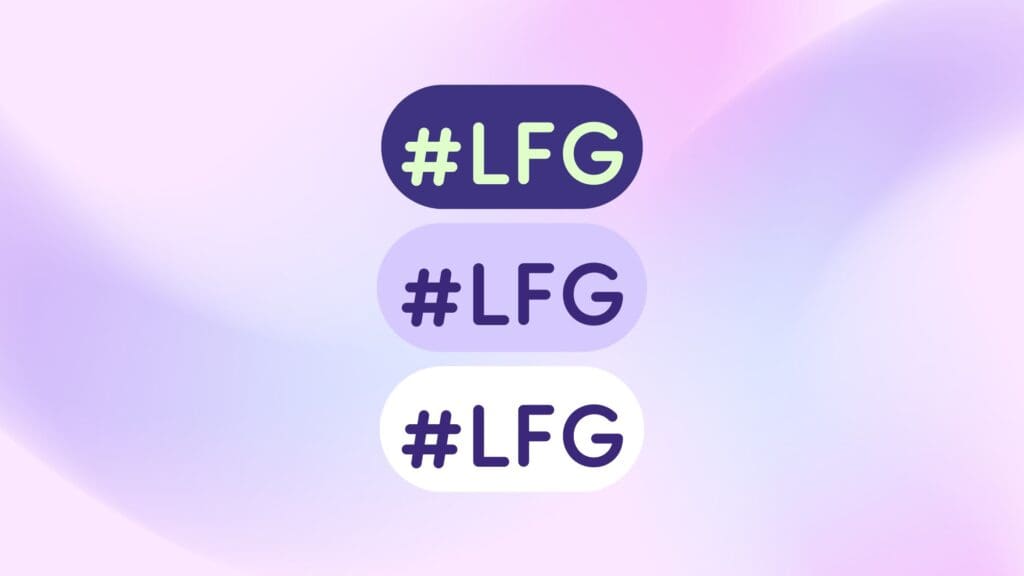
Nikki is the co-founder of Fundraising Everywhere, featured in 2021’s Digital Womxn to Watch, and an international speaker about building innovative and inclusive teams.
Earlier this year we shared our 2024 highlights and I realised that for many, this would have been the first time hearing about any of it – which isn’t good for transparency, but it’s also not great for anyone who wanted to get involved in any of it.
So, if you’re a fundraiser changing the world, a charity leader making big decisions, or a sector professional looking to be part of something bigger – here’s what we’re aiming for in 2025. We’d love to have you as part of it!
Our mantra
After getting the team together to plot and plan, a vibe was becoming more obvious.
In 2023 due to a team bereavement, we maintained. In 2024, we grew the team slightly and built strong foundations. And now, with more talent, data, and direction, the vibe is all about LFG.
Let’s F****** Go.
We know what we’re doing well, we know what we need to make better, and we know how to improve it.
So let’s do the thing.
LFG.
Our strategy on a page
In 2024, we had a modest growth in income, which we have put straight back into Fundraising Everywhere’s platform and people.
We have added a new Head of Community Engagement and Relationships to our SLT team, and in early 2025 will be adding two more people to our management team to help us deliver the goals we’ve mentioned here.
A significant investment has been made into our website which you’ll start to see the benefits of in early 2025. Members will be especially excited about this part!
We’re a bootstrapped company meaning we have no investors and are 100% founder-owned. Every member, attendee, and sponsor allows us to pay our speakers, improve the events we host, and invest in the tech we host it on.
We’re hugely grateful to each and every one of you for making that possible.
Objective 1: Grow our community
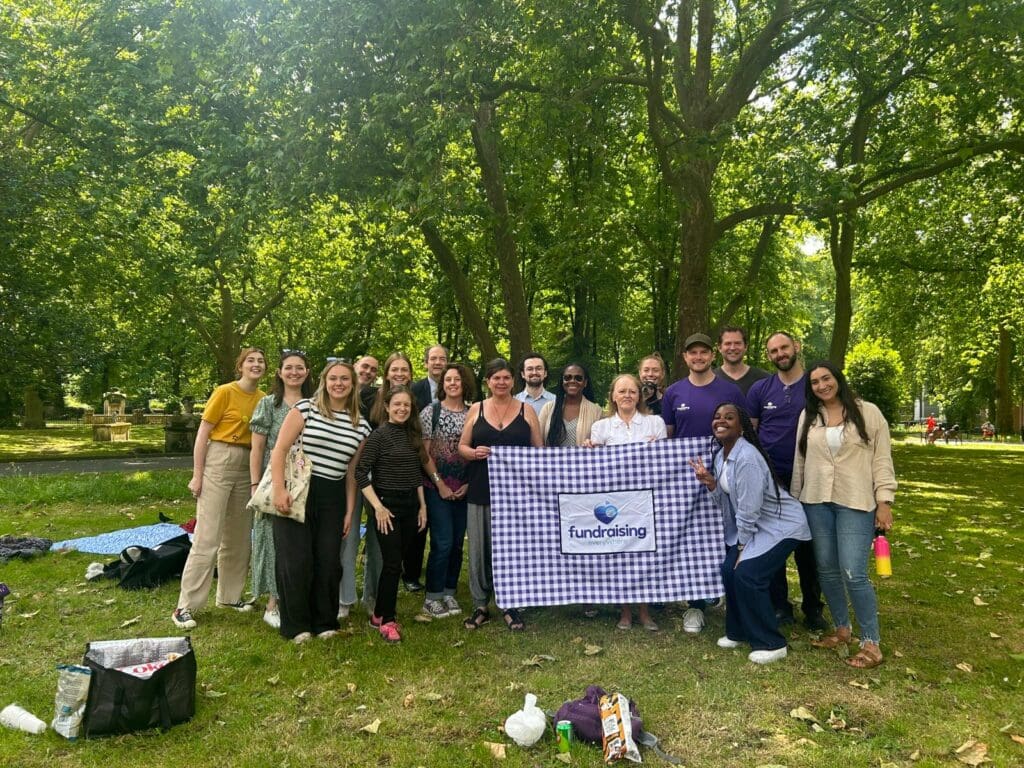
This isn’t about just whacking more people onto our mailing list. It’s about growing community, belonging, wellbeing, and skills.
It’s about sharing content people find useful and want to see in a way that makes them feel uplifted. Sending fewer but better communications to the right people at the right time through our own mailing list or others.
It’s about being clear on what our channels are for and how to use them – and which ones we can do without.
We’re recruiting a new marketing manager who specialises in email to help us nail this and will be keeping an eye on engagement metrics throughout the year (not just the list number).
Objective 2: Improve event engagement
Again, this isn’t just about numbers.
Fundraising Everywhere is in its sixth year and has no signs of stopping. Every year we welcome thousands of new people into the community and whilst we receive consistently positive feedback, we don’t want to get comfortable and lose the focus on quality.
2025 is about improving the event experience for attendees.

We’re hiring a new Events Manager whose role is focussed on supporting speakers to deliver great content by implementing a speaker onboarding process that includes rehearsals and earlier submission of content (so you know what you’re signing up for) and supporting event curators to put together inclusive, exciting, and useful events.
We’ve also refined the conference topics we deliver to support the wider community, offering inspiration and networking opportunities that are relevant to fundraising strategy priorities. We’re also testing ‘Accelerators’, shorter masterclass style events that go into the detail of a specific topic.
You can find our 2025 events here. Future Accelerators will include acquisition, retention, lotteries, and data/CRM management.
A further goal for 2025 is to invest in improving the live virtual event experience to support better engagement and networking for members and attendees. This will obviously take more time and investment, but as our community grows it’s the first place that income will go!

Objective 3: Increase community impact
Through research and relationships, we’re seeing more of the FE community utilise our on-demand microlearning platform for adhoc training outside of events.
So to help you do that better, we’re investing in the on-demand experience.
In spring 2025, a new and improved members area will be available so members can search and find more relevant content, and be able to save their learning journeys so they don’t miss a learning opportunity.
You will find learning and development resources to support your personal objective setting and development plans, and there will be resources available for charities with an L&D team so we can complement their existing strategies.
We’re also investing in new, specially developed workshops to go into more depth in key topics. These masterclasses will be professionally created and recorded and available as part of your member onboarding journey.
More of the good stuff
Obviously there are some epic things we’re bringing back in 2025 like Picnics Everywhere, key conferences like the Supporter Experience Conference, Individual Giving Conference, and Legacy Fundraising Conference.
We’re also keeping our IRL networking running in the North East, Manchester, London, Dublin, and Edinburgh. Keep an eye on our list or socials for dates and speakers.

Members will continue to receive funded coaching and match-making opportunities, and will be the first people we go to when researching what we should be doing and how.

And of course there is continued collaboration with companies, professionals, and existing communities and groups in the charity sector so we can extend our reach, elevate their work, and offer more opportunities for people to contribute and learn.
The team that make it happen
We’re unable to deliver a great experience if our team aren’t invested in, too.
The team each receives €1,000 each to use on training and in 2025 we’ve improved our processes by bringing in personal objective planning – by reviewing our day-to-day against job descriptions, we’re able to see, and support, the gaps in skills or confidence. Some members of staff are on progression plans; working collaboratively on professional growth with a view to promote within FE in the future.
We’re also investing in increased headcount which will improve workloads and processes, and of course, bring new talents and insights to help us move in the right direction.
Existing staff have received a cost of living pay increase and new benefits including private health insurance alongside existing benefits like flexible hours, fully remote working, and a four day work week.
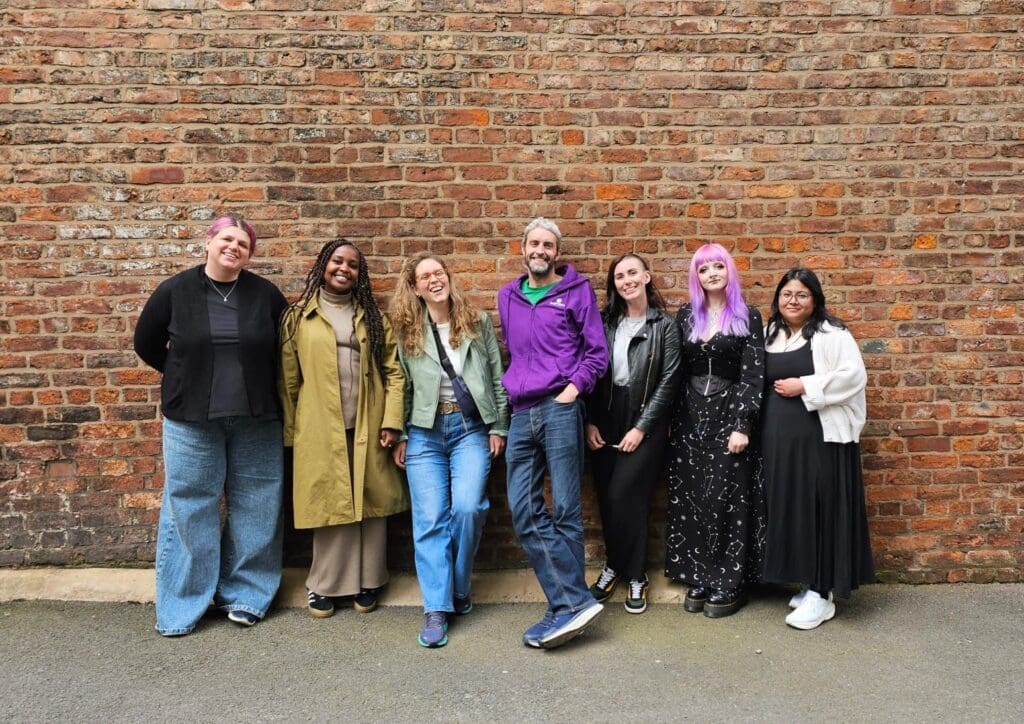
Want to join us?
We can’t do any of this alone, so if you want to join as a speaker, help with events (IRL or online – we give free membership or pay those that do!), partner with us, or become an affiliate we would absolutely love to talk to you.
And if you want to be part of a growing community that cares about what you learn and how you learn it, you should definitely be a member. Chat to Cam about getting your whole team involved or sign up here for just yourself.
We hope your 2025 is filled with existing and ambitious plans – LFG!
Voice Your Thoughts 🗣️
Our platform is open to anyone and everyone in the sector that has an opinion, idea, or resource they would like to share to help make our sector better. If you would like write and share something, pop an email over to hello@fundraisingeverywhere.com and we will support you every step of the way to share your voice.

With budget constraints being one of the key challenges fundraisers face, many charities are expanding their revenue streams to sustain their missions. Chief among those are corporate sponsorships, which empower charities to attain additional funds and foster long-term relationships with businesses and corporations.
Whether you’re seeking additional funds to power a 5K fundraiser or gauging support for your upcoming capital campaign, corporate sponsorships are a great way to attain that support. Let’s take a quick look at the steps and best practices for securing a sponsorship for your charity.
Understand the Types of Corporate Sponsorships
When fundraisers think of corporate sponsorships, they often think of businesses providing financial support to help charities execute a fundraising event idea. While event sponsorships are a key example, they are just one of many ways businesses can collaborate with charities.
Here are a few other common types of sponsorships:
- Financial: This is the most popular type of sponsorship, where a business offers monetary support to a charity.
- In-kind: The business provides in-kind donations, usually goods or services.
- Media: The business supports the charity through marketing or advertisements.
- Product: The business offers its products to be used or distributed during a charity event or program.
- Program: This is a longer-term partnership where the business sponsors an ongoing charity program or campaign, providing multiple types of support.
Now that you understand the different types of sponsorships, you can request the ones that make the most sense for your charity and potential partners. For example, if you plan on hosting a gala, request a product sponsorship from your local winery if you know they have overstocked vintages.
Identify the Best Corporate Sponsorship Prospects
Finding businesses to request sponsorships from can feel like looking for a needle in a haystack. However, charities don’t need to contact every local business or big corporation they can think of to acquire partnerships. Start by narrowing your sponsorship prospects to the organisations most likely to support your charity.
Look for businesses that:
- Have similar values to your charity
- Operate in your local community
- Work in a similar vertical or industry
- Share target audiences with your charity
- Have a history of corporate philanthropy, which 360MatchPro defines as “voluntary activities or investments in the betterment of society”
Especially if you are a small charity leader, reaching out to your network can prove invaluable in the search for sponsorship prospects. Connect with other fundraisers to discuss businesses they’ve successfully partnered with. Or, ask them to refer you to business owners or executives interested in working with charities.
Set Yourself Up as a Great Sponsorship Candidate
To establish yourself as a reliable sponsorship candidate, you must first understand what businesses get from these partnerships. Generally, their benefits include:
- Access to new or bigger audiences. Businesses can tap into your charity’s audience to increase brand awareness and reach potential new customers.
- Improved reputation. With 77% of consumers wanting to purchase from companies with corporate social responsibility (CSR) initiatives, sponsorships allow businesses to boost their reputations and differentiate themselves from competitors.
- Networking opportunities. Sponsorships usually include networking opportunities with VIPs such as major donors and other key business individuals, which can lead to additional partnerships for your sponsor.
- Heightened employee engagement. Paul Polman’s employee engagement report shows that 66% of U.K. workers and 76% of U.S. employees want to work for companies that positively impact the world. Sponsoring charities shows job applicants that the business is committed to improving the world.
- Tax benefits. Sponsorships usually qualify as charitable donations, resulting in potentially significant tax deductions for the business.
Based on these benefits, make the necessary operational changes that position your charity as a great candidate for sponsorship. For example, you should:
- Develop a strong mission statement that clearly defines your charity’s work.
- Ensure your promotional materials are professional and up-to-date to show how your organisation might market your sponsor.
- Prepare compelling stories about donors, volunteers, and beneficiaries to reinforce your mission’s value.
- Organise your data to qualitatively show your charity’s impact, marketing capabilities, and more.
It’s good to do a baseline preparation that generally sets up your charity to secure sponsorships. However, you’ll likely come across a sponsor who may have different needs unmet by the activities above. In that case, you’ll need to do additional work to demonstrate your value as a partner.
Send Tailored Sponsorship Proposals
Just as you would personalise event experiences to your target audience, you must also personalise your sponsorship proposals to individual businesses. Thoroughly research each business, honing in on its needs and target audience.
Then, in your proposal, highlight:
- Specific sponsorship opportunities. Lay out several specific sponsorship opportunities they’d be most interested in. For example, if your aquarium is trying to acquire a sponsor with a specific interest in ocean fish, highlight your research program on whale sharks or the recently discovered papillated redbait.
- Discuss the value of their support for your charity. Beyond personal gain, many businesses genuinely want to impact their communities positively. Suppose you want to add excitement to your annual walkathon, which generates a significant portion of your charity’s annual income. You could explore creative ideas, such as organising a shoe drive fundraiser or selling t-shirts, as suggested in this Funds2Orgs walkathon guide. Then, convey to potential sponsors how their support will directly enable these innovations, emphasising their role in furthering your mission.
- Highlight the benefits they’ll receive. Create sponsorship tiers that outline the perks a sponsor will receive in exchange for a set amount of funds. For example, $2,500 might get a sponsor a dedicated space on your charity’s sponsorship webpage, a social media announcement, and an email newsletter mention. On top of that, highlight the more specific benefits for the sponsor, such as access to your charity’s audience of over 10,000 email subscribers.
Incorporate compelling visuals, stories, data, and other relevant information that might pique the sponsor’s interest. For example, if the sponsor is interested in working with charities that aid students in need, bring up the results of your recent program aimed at delivering school supplies to underprivileged students.
Additionally, include your contact information and follow-up communication plan in your proposal. This makes it easy for sponsors to reach out to you and gives them an idea of what messages to expect from your charity in the upcoming days.
After a business indicates its interest in the sponsorship you’re offering, it’s time to negotiate the specifics of the partnership and execute the plan. Don’t forget that your relationship doesn’t end after you’ve received the business’s support. With the right approach to stewardship and engagement, you can build a mutually beneficial relationship that lasts for years.
If you’re after more top content like this to power-up your partnerships, check out our Corporate Partnerships Conference 2025 coming up on March 20th.
Voice Your Thoughts 🗣️
Our platform is open to anyone and everyone in the sector that has an opinion, idea, or resource they would like to share to help make our sector better. If you would like write and share something, pop an email over to hello@fundraisingeverywhere.com and we will support you every step of the way to share your voice.
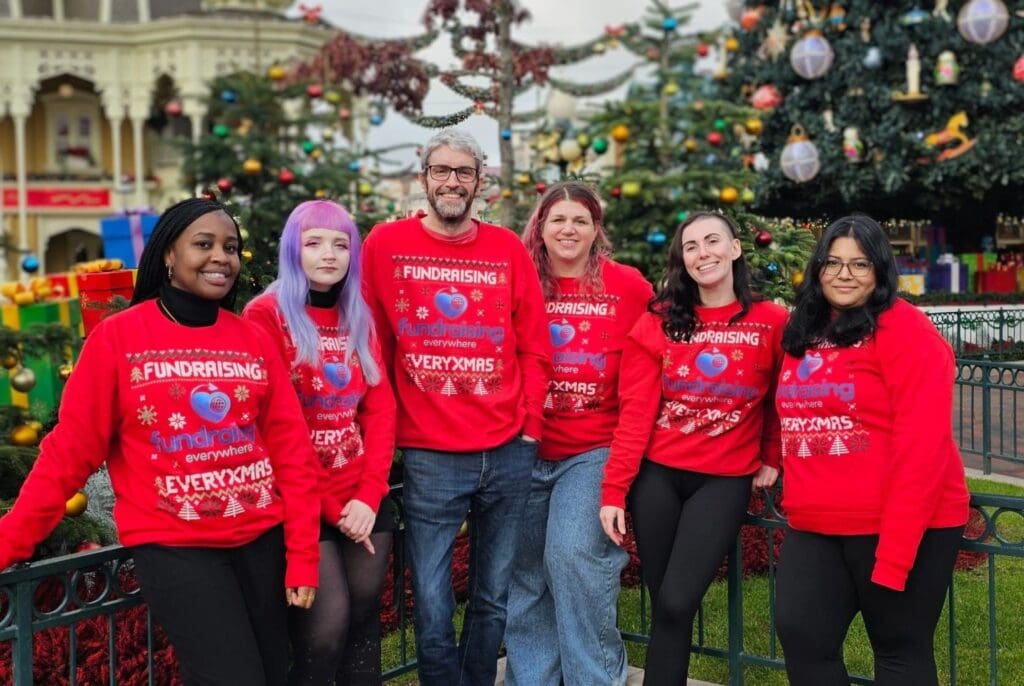
Nikki is the co-founder of Fundraising Everywhere, featured in 2021’s Digital Womxn to Watch, and an international speaker about building innovative and inclusive teams.
As we (fruitlessly) attempt to clear our inboxes for Christmas and look to a new year, I wanted to pause for a moment of reflection and gratitude for what has been an incredible year.
Going into 2024 we set ourselves modest growth goals to allow space to test new ways of reaching fundraisers and well, some went great…others didn’t.
This might not be the most exciting read for many of you. But, for transparency, I want it to exist somewhere so you can see behind the curtain.
Before I get into the stats though, I want to say ‘thank you’.
We couldn’t have achieved any of this without you.
Whether you’ve joined as an attendee, have chosen to push your professional development forward with us as a member, shown your support on social media, or partnered with us as a sponsor; it’s all noticed and appreciated. Thank you.
The good stuff
After a year ‘on pause’ in 2023, 2024 was all about bringing to life those new ideas we’d had bubbling – and most of it focused on creating offline spaces to deepen connections and bespoke learning programmes to deepen learning.
In June 2024 we hosted our very first Picnics Everywhere, a national (turned international!) day of getting together in outdoor spaces to share connections over shared food. In the end, we had 23 fundraiser picnics popping up in local parks with 389 people heading along to take part; a beautiful example of combining the outdoors with relaxed networking opportunities for people to relax and have fun with work events.

Keeping with the IRL theme, 2024 was the first year of trialing our IRL networking events which popped up in Newcastle, London, Manchester, Leeds, Edinburgh, and Chichester. It was a wonderful way to continue those conversations we’d started online and put faces to names after so many virtual conferences and webinars. A particular highlight was feedback from a fundraiser who had recently joined the sector from the private sector who said, ‘this is by far the best networking event I’ve been to, and I’ve been to a lot! You’ve nailed the energy and it feels so good to be here’
We’ll be continuing with both of these in 2025!
I should highlight here that both of these would not be possible without the people who gave up their time to help us organise and host these – we’re a relatively small team with only two of the three of us on the ‘fundraiser facing’ side of FE living in the UK, so we’re genuinely grateful to every picnic and IRL event organiser and host who has made all of this possible; special thanks to Josh Leigh who went above and beyond to actually ‘be’ me at our second London event when my train was delayed by 5hrs…and to the patience of the Manchester Picnics Everywhere attendees who ended up hostless due to illness!
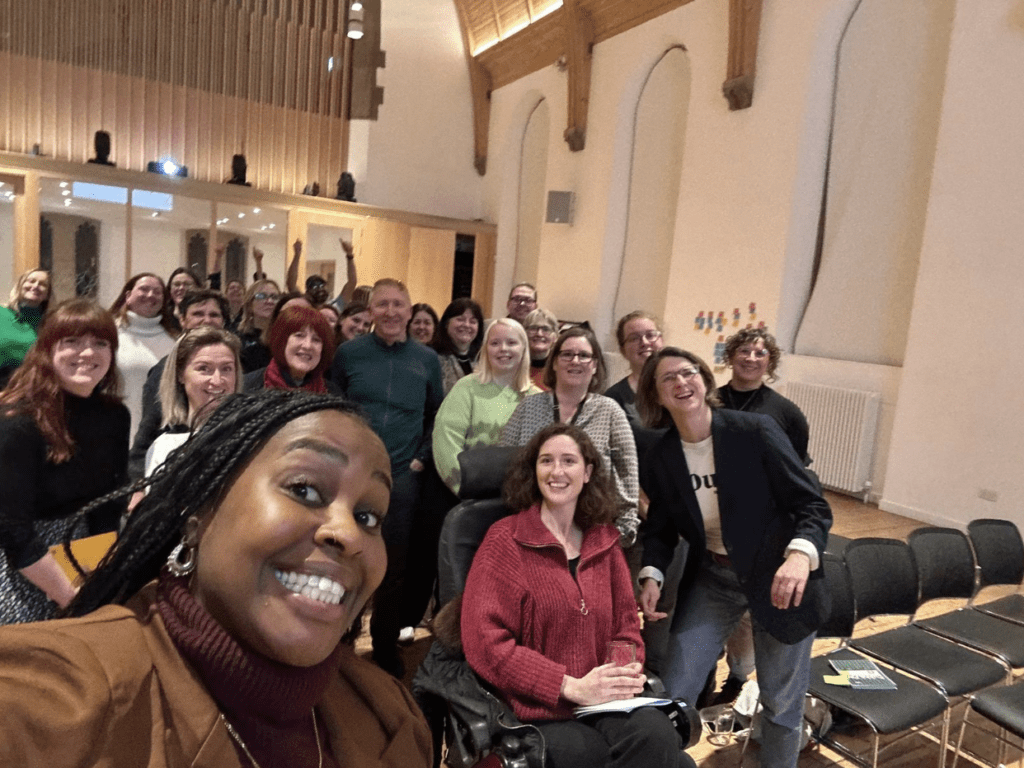
And when it came to improving how we supported fundraisers with their professional development, three things stand out from this year.
First, the Digital Learning Grant (DLG) funded by JustGiving – the DLG pilot allowed us to support 102 fundraisers with their digital fundraising skills by providing a specially curated training programme alongside six months of Fundraising Everywhere membership. The pilot ended in May with email marketing skills up 44.4%, digital fundraising strategy skills up by 90.7%, and small charity tactics skills up by 104%! You can read more of the outcomes here. We’ve just welcomed 200 fundraisers to the next cohort and will do it all over again from January 2025!
Next was our research into how and how much access to learning had an effect on a fundraisers ability to do their job – we expected positive results but the actual outcomes were amazing! Not only did we discover that providing access to learning (which most people accessed adhoc and online) improved their potential to reach their targets, but staff were more likely to have better well being and want to stay in their jobs. You can download your free copy here if you’d like to get the backing you need for investment in your development for 2025.
And finally, our new events. In 2024 we launched the Face to Face and Telephone, Supporter Experience, Fundraising Innovation, and Charity Digital Skills Conferences; as well as hosting our annual favourites including the Individual Giving, Trusts and Major Donors, Corporate, Legacies, and Events Fundraising Conference.
I’m always amazed and grateful for the support of our conferences; from the collaborators who help us curate or promote, to the speakers who lend their time and talents to teach; all of it is possible thanks to them and it’s brilliant to see how it helps people jump ahead in their work or career.

Who we reached

It was another cracking year for training and five years in, our community, reach, and impact still continues to grow.
Over the year, we’ve streamed the equivalent of 617 days worth of content, way up on previous years which reflects the preference highlighted in our research where fundraisers favoured the ease and accessibility of virtual. However, live conference views were down to 8,125 in 2024; a reflection of learning habits where fundraisers are choosing to learn adhoc and on-demand rather than booking out afternoons. More of that in our improvement section.
Our membership has grown to almost 2,000 and 63 organisational members (thank you, Cam!) and 515 people have joined us at our IRL networking events.
We platformed 239 speakers this year and have paid out over €30,000 either directly to them or to their favourite charities. Of these speakers, 38% described themselves as LGBTQIA+, 31% were from minoritised backgrounds, and 13% described themselves as disabled. All of these are increases on previous years, and I’m proud that alongside ‘seasoned’ speakers we are able to support and platform brand-new speakers who have gone on to feature elsewhere or progress in their career – definitely more of this in 2025!
What we need to work on
Obviously nothing is perfect and whilst everything we do comes from good intention, it doesn’t always go the way we expect.
In recent years, our focus has been on hosting amazing conferences for fundraisers. Whilst this still stands, recent research shows the majority of our community accesses our training on-demand – and with that there needs to be improvements.
We’ve been working with an agency on redesigning our on-demand experience for members which will go live in spring 2025. This will enable you to receive personalised recommendations for your learning journey, as well as the ability to track and save what you want to watch.
From our research it was apparent too that giving access to training wasn’t enough to help people use what they’ve learned, so we’ll be developing resources for our members to help them set and follow their own professional development goals. For our Organisational Members, we’ll be working alongside their Learning and Development teams to ensure what we do is complementary, for teams without this function we aim to be there as that support.
We’re also working really hard to improve how content is tagged on our website so you can search and find easily, and our email journeys are being updated to make sure you’re told about the learning opportunities that are right for you.
These are quite lengthy and costly projects so please bear with us, and give us feedback, as we navigate it!
Another area we’re improving in 2025 is our conference and webinar experience; both what you see as you attend and the content we host. Our aim is to confirm speakers and get their session information sooner so you’ll know exactly what you’ll be learning and when, and both speakers and sponsors will receive onboarding training so they’ll know how to deliver the best possible content to help you succeed. We’re recruiting an Events Manager to help us out with this so if you’d like to join us in the new year, please do apply!
We’ll be sharing more about our 2025 strategy in the new year which will share more about how and when we’ll be making these improvements, as well as what else we’ve got going on to help you succeed both in skills and confidence.
For now, please know how much I and the Fundraising Everywhere team appreciate you.
With each year brings new insights, challenges, and high points; and getting thorough stronger and better is entirely down to you and the community we support.
We hope your 2024 reflections fill you with the same gratitude we’ve had doing ours, and that we’ll celebrate even more successes in 2025.
Happy holidays from all of us at team FE x
Voice Your Thoughts 🗣️
Our platform is open to anyone and everyone in the sector that has an opinion, idea, or resource they would like to share to help make our sector better. If you would like write and share something, pop an email over to hello@fundraisingeverywhere.com and we will support you every step of the way to share your voice.
Nikki is the co-founder of Fundraising Everywhere, featured in 2021’s Digital Womxn to Watch, and an international speaker about building innovative and inclusive teams.

In our latest research exploring how access to learning can help you thrive in your job, 62% of fundraisers said their biggest barrier to learning new things was finding the time to learn.
And I get it.
As an ex-fundraiser, I remember the packed diary with one eye on my target and another on the numerous tasks piled up to reach it.
Throw in personal lives with maintaining relationships, physical and mental health, and all of life’s little admin tasks, you have this (showing my age here by using a meme…)

But here’s the thing, you do have time to learn new things and in fact, I bet you’re already using it.
Here’s how…
Learning Isn’t Just About Formal Pathways
When sharing the insights from our research report, Sarah Crowhurst said, “At some point charities decided that learning and development meant going on an expensive in person training course. Getting accredited. Coming back with all the knowledge and insight to magically transform a project or process. But it’s so different to that”
And others agree.
In our results, online training, both live and on-demand, was the most popular format attended by 97%. We’re seeing evidence of this across the sector. As well as courses, workshops, and webinars provided by businesses and freelancers, Fundraising Everywhere supported 10,106 fundraisers with their professional development in 2024.
However, despite this, 50% of charities were offering funding for individual certification as their lead learning choice which is a huge time and brain energy commitment, not to mention inaccessible to many people’s learning styles. Most fundraisers stated their preference was conferences or adhoc training; mostly accessed online.
‘Learning’ does not mean ‘classroom’, ‘qualifications’, or ‘courses’. Accessing a webinar, reading a blog, or attending a conference can help you learn something new.
Learning Can Happen In Minutes
I’m willing to bet you money you have either Instagram, TikTok, or LinkedIn on your phone.
And when you’re scrolling on those apps, you watch videos, read posts, and swipe carousels (and you probably end up in a scroll hole that you have to snap out of an hour later)
I’m not here to berate you for that, it’s sometimes nice to let your brain mindlessly float off (especially when your feed is full of dog videos) – but I do want to highlight that every video you watch or post you read, you’re already learning something new.
Whether it’s news about the world, how to create airfryer recipes, or train your puppy; social media content is geared towards educational content to build brands, community, and businesses – so use that, and your time online, to your advantage.
Curate your feed so the things you’re learning are useful to the goals you’re trying to achieve and create a mindset that even minutes, not hours or days, you can learn something new.
Learning One New Thing Is Still Going To Help You Thrive
When investing time or effort into learning there’s a pressure to absorb everything and walk out away from the situation with your brain bursting out of your skull.
But that approach and mindset means your brain is focusing on keeping the information in, instead of absorbing what it means and how it can help you.
When approaching learning, accept that even learning just one thing is enough to improve your skills; and your ability to reach your targets.
Learning And Reflecting Keeps Your New Skills In Mind
There’s a tendency to rattle through our days when they’re so busy. And when we don’t make time to reflect, it’s easy for the things we do learn to disappear into the brain vault.
With your new mindset of being able to learn from multiple sources on a regular basis, be aware when those lightbulb moments are going off and make a note.
Share those learnings, and where you found them, on a regular basis with your team and discuss how they might be used.
Keep the habit of learning, noticing, sharing, and reflecting by creating spaces – conversational or digital – for you and your team to build healthier mindsets around what learning can look like.
In short (because that’s what we’re trying to highlight here) you are already learning something every day in the conversations you have, social media you engage with, and things you read – including this!
Be more mindful of those lightbulb moments where you have them and create more ways to seek them out.
And if you’d like to make it even easier to find hundreds of tiny lightbulb moments in one place, Fundraising Everywhere can help. Our on-demand microlearning resources mean you can learn any time, anywhere, and at your own pace. Then we have monthly live virtual and IRL moments where you can come together and share them with other people.
You can use promo code FREEMONTH here for you as a way of saying ‘well done for prioritising your learning by reading this article!’
Or if you’re a leader wanting access for your whole team like the folks at British Red Cross, WWF, Hampshire and Isle of Wight Air Ambulance, and Young Lives vs Cancer, contact Cam St Omer Donaldson here about getting involved.
Voice Your Thoughts 🗣️
Our platform is open to anyone and everyone in the sector that has an opinion, idea, or resource they would like to share to help make our sector better. If you would like write and share something, pop an email over to hello@fundraisingeverywhere.com and we will support you every step of the way to share your voice.

Major giving is your charity’s ultimate tool to help manage challenges. Major gifts can help you work more effectively toward your mission, fund a critical need, or expand your services to a broader audience.
All major donor prospects will have given to and interacted with your charity at some point. Beyond that qualification, what additional indicators should you look for that demonstrate a prospect’s willingness and ability to become a major donor?
In this guide, we’re going to review the three major donor indicators noted in Bloomerang’s major gift fundraising guide (otherwise known as the three C’s):

- A deep connection to your organisation
- Demonstrated concern for your mission
- Capacity to give in larger amounts
Let’s explore exactly what to look for in each of these categories.
1. A Deep Connection To Your Organisation
Convincing someone to make a significant gift to your charity requires them to have more than just a passing fancy for your organization. Donating is an emotional experience for most supporters, so you should seek prospects with a strong existing connection to your charity and its work.
Use your nonprofit CRM to identify donors with characteristics that indicate a powerful affinity for your mission, including:
- History of event attendance and donations, such as large auction donations
- Long-time participation as a volunteer, board member, or committee member
- Participation in a peer-to-peer campaign, whether as a fundraiser or donor
- Current status as a corporate sponsor or other community partner
- Status as a former beneficiary of your services or a family member of a beneficiary
These traits demonstrate that an individual has taken steps to get to know your organisation better and become more personally involved with its mission. In addition to using your nonprofit’s CRM to identify this information, you can also directly ask supporters via surveys how they feel about your organisation and what motivates them to continue giving their support.
2. Demonstrated Concern For Your Mission
Along with a loyal commitment to your organisation, major donor prospects must strongly believe in your mission itself. Your organisation may change over time as programs evolve, staff and board members change, and the scope of your work expands. However, your mission will stay consistent throughout all organisational changes.
These statements will likely ring true for many of your prospective major donors:
- They learn about your mission regularly. They’re highly engaged with your organisation’s marketing materials, sharing social media posts, opening emails, responding to direct mail inquiries, and watching videos.
- Your mission is related to their field of work or study. Many people pursue educational degrees or career paths that align with their interests and principles. For example, your environmental organisation may attract donors who are leading conservation researchers at local universities.
- Your mission is a personal value to them. Use surveys and conversations with potential prospects to understand their personal values and whether those contribute to a deep sense of duty to support your mission. For example, some supporters may have a firmly held religious belief or personal conviction to help people experiencing poverty in their community.
Review your donor database to identify prospects who exhibit a strong commitment to your mission and goals. These indicators suggest that a supporter is not only prepared to make a larger donation but also willing to maintain that level of giving to help advance your mission.
3. Capacity To Give In Larger Amounts
Of course, every prospective major donor must be financially equipped to contribute at the highest level. Identifying which donors have the capacity to donate large sums allows you to focus your major gift cultivation efforts on realistic prospects.
Prospects may be in the right financial situation to give a major gift if they:
- Exhibit multiple wealth indicators. These characteristics include stock and real estate ownership, large donations to other charities or political organizations, and business affiliations.
- Make multiple gifts throughout the year. Major gift prospects may contribute multiple times a year in sums that add up over time. For example, the largest contributors to your monthly giving program could be potential major giving prospects.
- Are currently mid-level donors. Although mid-level donors typically maintain their giving level, they’re often among the most likely prospects for bequests and legacy giving, which are important forms of major giving. One study found that over half of mid-level donors surveyed either made a bequest to a charity or planned to do so.
Use a prospect research database to identify prospects who exhibit specific wealth indicators, like real estate holdings and stock ownership. This type of tool is especially useful if you’re a small charity without a prospect research specialist on your staff.
Remember that the most promising major giving prospects will exhibit all three indicators discussed in this guide. If you focus solely on wealth indicators, you may find yourself reaching out to individuals who have the means to make significant contributions but lack the motivation to do so. On the other hand, if you only concentrate on affinity indicators and neglect wealth information, you might waste your time and resources on individuals who are unable to give at a higher level.
By considering every facet of what drives someone to become a major donor, you can more easily identify which supporters to prioritize in your cultivation efforts and drive a higher return on investment for your major gift program.
Want to elevate your trusts, grants, or major donor fundraising?
Check out the Trusts and Major Donor Conference 2024
Happening on the 12th December
Voice Your Thoughts 🗣️
Our platform is open to anyone and everyone in the sector that has an opinion, idea, or resource they would like to share to help make our sector better. If you would like write and share something, pop an email over to hello@fundraisingeverywhere.com and we will support you every step of the way to share your voice.
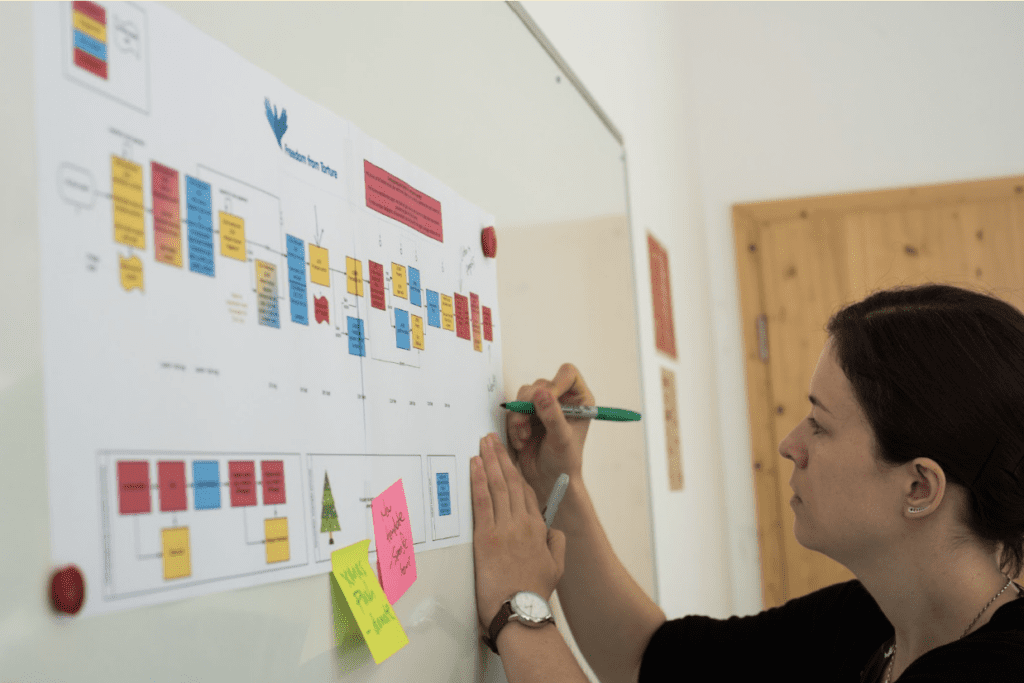
Claire is a digital mobiliser, fundraiser, and campaigner. Having worked in engagement and mobilisation teams at Greenpeace, ActionAid, Cancer Research UK and Amnesty International, she joined more onion over eight years ago. Since then she has delivered dozens of engagement and supporter journeys projects with organisations of all sizes and has trained hundreds of charity professionals in the same.
Crafting Powerful Supporter Welcome Journeys
At More Onion, we’ve had the pleasure to work with charities of all sizes on welcome journeys to warm up, convert and retain brand new donors. Here are some insights from a decade of testing and learning:
What Is A Supporter Journey?
Just to start off with a quick definition to make sure we’re on the same page. We’re talking about a connected series of communications that feel like an ongoing conversation, instead of a seemingly random series of communications that might jump around topics and asks. Within a journey each email is created to meet a specific supporter need at that moment in time, balancing different types of asks, and evolving the narrative as the journey progresses.
Typically supporter journeys are primarily delivered via email, however most journeys also factor in other key channels such as post and phone.
The Value Of Supporter Welcome Journeys
That may sound like a lot of work. But here’s why it’s worth taking the time to invest in great welcome journeys.
- It’s much easier to keep attention than to acquire it in the first place. If you don’t engage people quickly – it could be too late.
- Recruiting supporters is expensive! A great supporter journey helps to make sure it’s money and time well spent.
- Optimise your recruitment work. A well designed journey creates lots of opportunities for engagement and conversion early in the relationship. This allows you to strategically assess the performance of your recruitment projects. You can pivot your recruitment work to prioritise sources that are turning into great supporters.
- Learn more about your supporters. There’s no better time to get to know a supporter than right at the beginning of your relationship. Learn what motivates them and what ways they’d like to support your work. By asking the right questions up front you can make sure you’re building great supporter experiences for years to come.
- Test, learn and get better quickly! Unlike most communications, welcome journeys are often automated which means they are scheduled to send X days after signup. This creates a fantastic opportunity to constantly review and improve your journeys based on real performance data.
Crafting Effective Welcome Journeys
When it comes to creating an effective welcome journey, there are a few key tips to keep in mind.
- Start where your audience is. The first few emails you send should be the same topic as the signup action – you can evolve the narrative in later emails if you need to.
- One email, one ask. If you have more than one thing to ask – send another email. If the ask isn’t worth its own email, it probably wasn’t worth sending in the first place.
- Remember to meet your supporter’s needs, not just yours. This might include building knowledge, feeling connected, seeing the impact of their gift, or building empathy. You can find out more about these types of emails in our engagement action and supporter journeys reports linked below.
- Be active. Don’t just talk at your supporters – involve them. The welcome journey sets the tone for your whole relationship, so if you just send broadcast messages without anything interesting or useful to do, they may quickly learn that it doesn’t actually matter much if they open your emails or not.
- Constantly test to improve. You can use optimisation testing (more resources below) on individual emails or entire journeys. This allows you to answer smaller questions such as what messaging to use within individual emails, as well as long term performance questions such as how often and how early to ask for (more) money.
Free Resources
You can learn more about journeys, engagement actions and optimisation testing on these free reports:
- Report: Great supporter journeys, and how to automate them
- Report: Deepen relationships with engagement actions
- Report: Optimisation testing
We hope you find these resources useful when it comes to creating your supporter welcome journeys.
If you’d like any hands-on support with your supporter journeys, reach out to us: claire@more-onion.com
Voice Your Thoughts 🗣️
Our platform is open to anyone and everyone in the sector that has an opinion, idea, or resource they would like to share to help make our sector better. If you would like write and share something, pop an email over to hello@fundraisingeverywhere.com and we will support you every step of the way to share your voice.

Personalised event experiences can turn attendees into loyal supporters by making them feel individually valued and connected to your charity’s goals. When planning fundraising events, incorporating small personal touches—before, during, and after the event—can boost engagement and strengthen long-term commitment.
Let’s explore how you can create memorable, tailored experiences at each stage of your event to build deeper connections and lasting support for your cause.
Understanding Your Attendees
By gathering relevant data and segmenting your audience, you can plan experiences that resonate with the preferences and interests of each individual or group in your community.
Collecting Data for Personalisation
Start by identifying key data points that can help you understand your attendees, such as:
- Past Participation: Have they attended previous events or donated before? Boost excitement among returning supporters by recalling highlights from events they previously participated in. Consider providing incentives, such as discounted tickets, to inspire new attendees.
- Preferred Communication Channels: Some attendees may prefer emails, while others engage more through social media or text. Use the channels your supporters prefer most to increase their likelihood of reading and responding.
- Interests and Motivations: Learn what drives supporters to attend your events, whether it’s supporting a specific project, staying active, or meeting new people. Leverage these insights to inform your marketing strategy and event activities.
- Donation History: High-impact donors or participants who have raised significant funds may appreciate special recognition or exclusive event perks.
Use your event registration form and supporter surveys to collect more information about your attendees. As you do, be sure to maintain data hygiene by standardising formatting in your database and regularly auditing supporter profiles to identify any outdated or missing details.
Segmenting Attendees for Tailored Experiences
Categorise your attendees into distinct groups to target personalised elements more precisely. Consider segmenting them into categories such as:
- Top Fundraisers and Major Donors: Recognise these attendees and encourage their continued support by giving them exclusive perks or “VIP” access to your event.
- New Participants: Tailor a welcome experience for newcomers, such as a first-time attendee guide or designated support area, to help them feel more comfortable and included.
- Returning Supporters: Strengthen connection and loyalty among returning attendees by including shout-outs at your event or sending them free, exclusive event merchandise before they attend.
By collecting key data points and segmenting your audience thoughtfully, you lay the groundwork for delivering a personalised experience that feels genuinely meaningful to each attendee.
Pre-Event Personalisation Ideas
Explore these ideas to create personalised attendee journeys that begin from the first interaction:
- Customised invitations: Personalise invitations by addressing attendees by their preferred name, referencing past participation, or connecting to their interests. For example, remind previous attendees of their positive impact, or highlight how this year’s event relates to their past involvement or a specific project they support.
- Tailored registration options: Offer a flexible registration process that allows attendees to choose options that best suit their needs, such as registering individually, signing up with others, or participating virtually.
- Flexible pre-event engagement: Build anticipation by sending pre-event updates tailored to attendee groups. Engage attendees on social media with sneak peeks and shout-outs for returning participants, and encourage them to share their excitement with a unique event hashtag. This strategy not only builds a stronger community but also increases awareness and involvement.
These personalised pre-event touchpoints enhance engagement, helping attendees feel more connected to your charity and committed to supporting its mission before event day even arrives.
On-the-Day Personalisation Ideas
Consider these thoughtful event-day touches to make a lasting impression on each attendee:
Branded Welcome Kits
Provide attendees with personalised welcome kits, which might include:
- A name tag
- Branded merchandise like water bottles, hats, or stickers
- Samples or giveaways from event sponsors
These items create a sense of belonging for attendees during the event and serve as mementos they can continue to appreciate once the event concludes.
Technology for Real-Time Personalisation
Integrate event technology to add a personal touch in real time, such as:
- Event Apps: Use an event app where attendees can access the event schedule and receive personalised notifications.
- Interactive Leaderboards: Display real-time leaderboards for donations or other individual achievements to inspire engagement and friendly competition.
- Special Check-In Experiences: To enhance the experience of top donors or VIP guests and show appreciation for their support, consider providing dedicated check-in areas or fast-track options.
These personalised on-the-day experiences make participants feel recognised, valued, and engaged in ways that strengthen their commitment to your charity’s mission. By focusing on personal touches throughout the event, you create a day to remember—one that attendees will look forward to each year.
Post-Event Personalisation Ideas
After the event, personalised follow-up is key to building lasting relationships. Start with sincere thank-you messages highlighting each attendee’s unique impact to make them feel appreciated and valued.
Follow up with tailored content, like event highlights and impact stories, to show the difference each attendee’s support made. Share a post-event survey to collect feedback and demonstrate that your organisation is committed to continually improving its event experiences.
Finally, maintain supporter relationships by sharing exclusive updates, inviting them to future events, or providing other involvement opportunities they may be interested in. For example, you can ask previous attendees to serve as volunteers at your next event or join a dedicated social media group to connect with like-minded individuals who are passionate about your cause.
Personalised experiences turn your event into a memorable journey that strengthens support and deepens commitment to your charity’s mission. By incorporating personal touches before, during, and after your event, you turn supporters from passive participants into active champions of your cause.
As you plan, remember that personalisation doesn’t have to be complex. Even small charities with limited budgets can find ways to tailor event experiences for attendees. Start small, focusing on what resonates most with your audience, and watch as each personal touch builds a stronger, more engaged community ready to support your cause year after year.
Voice Your Thoughts 🗣️
Our platform is open to anyone and everyone in the sector that has an opinion, idea, or resource they would like to share to help make our sector better. If you would like write and share something, pop an email over to hello@fundraisingeverywhere.com and we will support you every step of the way to share your voice.
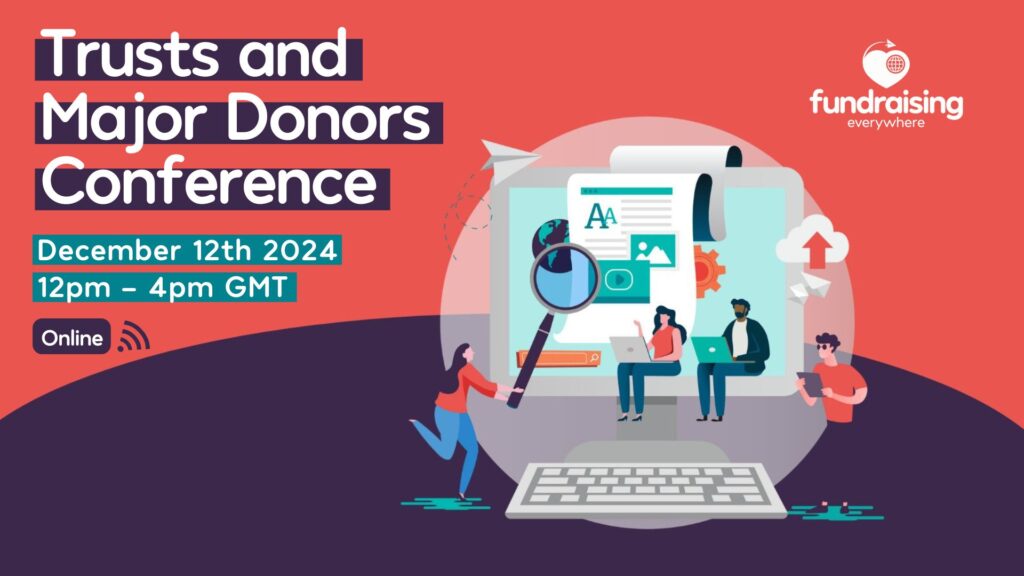
Caroline is an expert in trusts and foundations and major gifts fundraising and has raised millions for good causes. She runs LarkOwl with her partner Tony which supports charities with income generation from fundraising and commercial sources. She writes the Nest Egg, a fun and irreverent reader supported publication for fundraisers looking to supercharge their income generation activities and drive better results. Caroline is a regular guest host for the Bright Spot Members’ Club and her writing has been featured in Fundraising Magazine. For the past two years, she has co-curated Fundraising Everywhere’s Trusts and Major Donors conference.
If you’ve been wanting to register for Trusts and Major Donor Conference 2024, but haven’t been able to get budget sign-off from your manager, or you’re just not sure how to ask, Caroline Danks, conference co-curator, has written this brilliant letter. Copy, paste, and let’s get you there!
Dear Boss,
I’m writing to request a ticket to Trusts and Major Donors 2024.
It’s happening online at midday GMT on Thursday 12 December.
Please find below my reasons below / a business case for attending this event.
1. The Content
As a fundraiser working in the philanthropy space, I am very excited by every single session happening at Trusts and Major Donors 2024.
This year’s conference will focus on practical skills (following feedback from last year’s shindig).
The curators have been very intentional in matching speakers to topics. Beth and Caroline have been doing this work for a long time. They know the state of the sector and have both done major gifts and trust fundraising successfully in a number of different settings.
They know the topics we want to hear about (and the people who should be teaching them) – will you just look at those fabulous faces?!
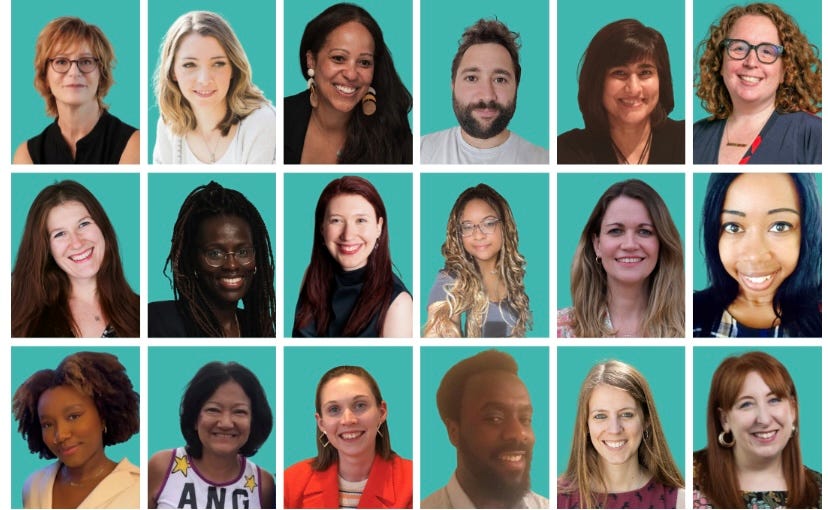
I am especially excited to learn how:
Experienced trusts and foundations consultant Alicia Grainger organises her research;
Olivia Andrews approaches Monitoring and Evaluation AND tries to do it in an anti-racist way;
Philanthropy superstars Kevin Amponsah and Sarah Washington increase success rates and get face to face meetings.
Additionally, I want to hear:
Author and philanthropist Lisa Greer in conversation with Caroline about how donors and fundraisers can connect authentically
Lindsay Storie’s honest reflections on a career working with philanthropists (and how his thinking has changed)
A group of fundraisers talking about why they’ve remained in post for as long as they have – retention isn’t just for donors, it’s for staff too…
Matt Zeqiri sharing a fresh and creative approach to proposal writing.
The full programme is here with more details are being added all the time.
2. The Community
Being a fundraiser is hard right now.
I’m tired, you’re probably tired.
An afternoon away from Raisers’ Edge to connect with colleagues would be a welcome and necessary intervention in my weary fundraiser life.
Chatting with others and exploring new ideas together is energising and motivating. It’s exactly the boost I need right now.
Fundraising Everywhere’s recent research on Learning and Development in our sector revealed:
“a strong desire among fundraisers for opportunities that go beyond immediate work needs, especially in areas like well-being, networking, and career progression”.
So, before I slide into a vat of brandy butter and Michael Buble, I’d love some inspiration from fellow sector warriors so I can emerge from the fairy lights in January feeling fresh and excited for the coming year.

3. Ease Of Access
This is an online conference meaning it’s so much easier for me to go!
As well as being able to attend from the comfort of my Oodie (Or we could do a watch party as a team? I promise to wear actual clothes), there will be no need for you to stump up the cost of travel, accommodation or dinner in Wahaca on the way home.
All we need to cover is the price of the ticket (which is £75).
Because it’s online, I get to watch back the sessions I missed and / or my favourite sessions. Amazing!
4. ROI
We’re in the high value market so I don’t need to tell you that most of the gifts we solicit are in the range of four figures +
I’m totally confident that if I were to pick up only 1 golden nugget of advice from this conference and apply it (as many times as needed), it will result in one more gift than had I not attended.
That’s at least £1,000 more for (insert charity name).
But with so many incredible sessions, plus the ability to watch it back afterwards, I’m going to get multiple nuggets which will undoubtedly contribute directly to our success overall.
Fundraising Everywhere’s recent research backs this up:
“There’s no doubt that Learning and Development drives success.
In our research, 91% of fundraisers from growing organisations have engaged in training in the past 12 months…
This shows how learning doesn’t just help you grow professionally – it also has a direct impact on the success of your charity”.
The cost of attending is just £75 – a steal really when you consider the difference it’s going to make.
5. The Opportunity To Support Some Wonderful People
The team at Fundraising Everywhere are completely fantastic people. They’d never say so themselves of course, they’re far too modest.
If I attend this conference, we as an organisation get to make a statement about the kinds of people we want leading our fundraising training in the future.
Fundraising Everywhere have solid policies regarding inclusion that they ACTUALLY live by.
They pay every single one of their speakers, meaning that people who cannot afford to speak for free are not excluded from sharing their knowledge with others.
They actively seek out new voices and perspectives, prioritising experts from diverse backgrounds who have thus far been excluded from a traditionally very white / hetero / ableist sector.
They are conscious of the environmental impact of their work and take action to mitigate their carbon use.
They provide scholarships, training and free content for charities with limited budgets.
All of this not only results in better training for me (no one wants to hear the same old people repeatedly), but it encourages others to meet new basic standards of decency and humanity.
I would love to see (insert your org name here) committed to similar values.
To Recap
So all that being the case, will you buy me a ticket to Trusts and Major Donors 2024?
I would be forever grateful and promise not to leave to join (insert alternative charity name here) anytime soon.
With inestimable gratitude – thanks for being an awesome boss,
(insert your name here)
You can buy tickets to Trusts and Major Donors 2024 using this link.
Please note, this is an affiliate link meaning that LarkOwl gets 25% of all ticket sales bought through this link (which we will be spending on a barrel of the finest spiced rum).
Can’t wait to see you all there.
Voice Your Thoughts 🗣️
Our platform is open to anyone and everyone in the sector that has an opinion, idea, or resource they would like to share to help make our sector better. If you would like write and share something, pop an email over to hello@fundraisingeverywhere.com and we will support you every step of the way to share your voice.
© Fundraising Everywhere.
hello@fundraisingeverywhere.com
+44 333 015 6154
Designed & developed by mtc.
